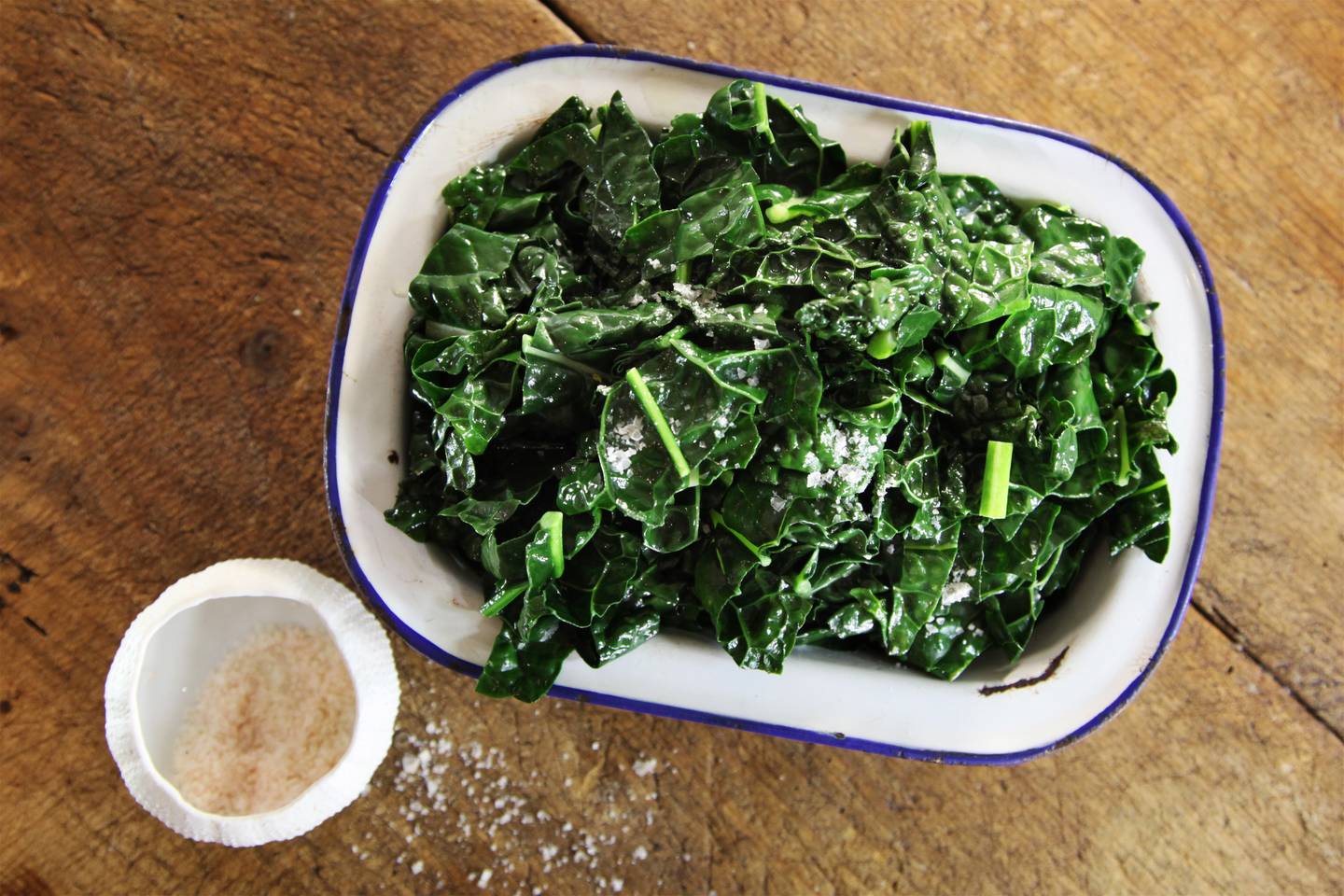
Cavolo Nero, also known as Tuscan kale or black cabbage, is a leafy green vegetable that has been a staple in Italian cuisine for centuries. Its deep, dark green leaves are packed with nutrients, making it a popular choice for health-conscious eaters. But what exactly makes this vegetable so special? Cavolo Nero is not only rich in vitamins A, C, and K, but also boasts a high fiber content, which aids digestion. Its slightly bitter, earthy flavor adds depth to soups, stews, and salads. Whether you're a seasoned chef or a home cook, incorporating Cavolo Nero into your meals can elevate your dishes while boosting your nutrient intake. Ready to learn more? Let's dive into 20 fascinating facts about this versatile green!
Key Takeaways:
- Cavolo Nero, also known as Tuscan kale, is a nutrient-packed leafy green with a rich history in Italian cuisine. It's versatile in the kitchen, offering a robust flavor that complements a variety of dishes.
- Whether enjoyed in a hearty soup or as a crunchy addition to salads, Cavolo Nero is a powerhouse of vitamins, minerals, and antioxidants. It's easy to grow and can thrive in various climates, making it a rewarding addition to any garden.
What is Cavolo Nero?
Cavolo Nero, also known as Tuscan kale or Lacinato kale, is a dark green leafy vegetable. It's a staple in Italian cuisine, particularly in Tuscany. Its unique texture and flavor make it a favorite among chefs and home cooks alike.
- Cavolo Nero is a type of kale, specifically a variety of Brassica oleracea.
- It has a distinctive dark green color and bumpy texture, earning it the nickname "dinosaur kale."
- This vegetable has been cultivated in Italy for centuries, particularly in the Tuscany region.
- Cavolo Nero is often used in traditional Italian dishes like ribollita, a hearty vegetable soup.
Nutritional Benefits of Cavolo Nero
Packed with nutrients, Cavolo Nero is a powerhouse of vitamins and minerals. It's not just tasty but also incredibly good for you.
- Rich in vitamins A, C, and K, Cavolo Nero supports immune function, skin health, and blood clotting.
- It contains high levels of antioxidants, which help combat oxidative stress and inflammation.
- This kale variety is an excellent source of dietary fiber, aiding in digestion and promoting gut health.
- It provides essential minerals like calcium, iron, and potassium, crucial for bone health, oxygen transport, and muscle function.
Culinary Uses of Cavolo Nero
Cavolo Nero's versatility in the kitchen makes it a beloved ingredient in many recipes. Its robust flavor pairs well with a variety of dishes.
- It can be eaten raw in salads, adding a crunchy texture and earthy flavor.
- When cooked, Cavolo Nero becomes tender and slightly sweet, perfect for soups and stews.
- It can be sautéed with garlic and olive oil for a simple yet delicious side dish.
- This kale is often used in pasta dishes, providing a nutritious and flavorful addition.
Growing Cavolo Nero
For those with a green thumb, growing Cavolo Nero can be a rewarding experience. It's relatively easy to cultivate and can thrive in various climates.
- Cavolo Nero prefers well-drained soil and full sun but can tolerate partial shade.
- It is a hardy plant, capable of withstanding frost, which can even enhance its flavor.
- Seeds can be sown directly into the ground or started indoors and transplanted later.
- Regular watering and occasional feeding with a balanced fertilizer will help the plants thrive.
Fun Facts About Cavolo Nero
Beyond its culinary and nutritional benefits, Cavolo Nero has some interesting tidbits that make it even more fascinating.
- The name "Lacinato" comes from the Italian word "lacinia," meaning fringed or lacy, referring to the leaf's texture.
- Cavolo Nero has been featured in ancient Roman texts, indicating its long history of cultivation and use.
- It is often considered a superfood due to its high nutrient density and health benefits.
- In Italy, Cavolo Nero is sometimes called "black cabbage" because of its dark, almost black leaves.
Cavolo Nero is more than just a leafy green; it's a nutrient-rich, versatile, and historically significant vegetable that deserves a spot in your kitchen and garden.
Final Thoughts on Cavolo Nero
Cavolo Nero, also known as Tuscan kale or black cabbage, is a nutritional powerhouse. Packed with vitamins A, C, and K, it supports immune health, vision, and bone strength. Its antioxidants help fight inflammation and chronic diseases. This leafy green is versatile in the kitchen, perfect for soups, salads, and stir-fries. Its slightly bitter, earthy flavor adds depth to dishes. Growing Cavolo Nero is relatively easy, making it a great addition to home gardens. Plus, it’s hardy and can withstand cooler temperatures. Whether you’re a seasoned chef or a home cook, incorporating Cavolo Nero into your diet can boost your health and culinary repertoire. So next time you’re at the market, grab a bunch and experiment with this fantastic green. Your body and taste buds will thank you!
Frequently Asked Questions
Was this page helpful?
Our commitment to delivering trustworthy and engaging content is at the heart of what we do. Each fact on our site is contributed by real users like you, bringing a wealth of diverse insights and information. To ensure the highest standards of accuracy and reliability, our dedicated editors meticulously review each submission. This process guarantees that the facts we share are not only fascinating but also credible. Trust in our commitment to quality and authenticity as you explore and learn with us.


